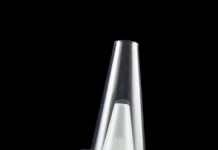The global high-temperature insulation materials market size stood at a value of more than USD 6.97 billion in 2023. The market is further expected to grow in the forecast period of 2024-2032 at a CAGR of 5.1% to reach over USD 10.95 billion by 2032. High-temperature insulation materials play a crucial role in numerous industries, including manufacturing, energy production, automotive, aerospace, and electronics. As the demand for high-temperature insulation materials continues to rise, there is a pressing need for innovation to meet the evolving requirements of various applications. In this blog post, we will delve into the evolution of high-temperature insulation materials, explore current trends and innovations driving the industry forward, and discuss the challenges and opportunities in this dynamic market.
Historical Overview
To understand the present landscape of high-temperature insulation materials, it’s essential to trace their historical development. Early civilizations utilized naturally occurring materials like clay, mud, and animal hides to insulate structures and kilns. However, significant advancements in high-temperature insulation technology began during the Industrial Revolution, driven by the need to enhance manufacturing processes and improve energy efficiency.
During the late 19th and early 20th centuries, the discovery and commercialization of synthetic materials, such as asbestos, marked a significant milestone in high-temperature insulation. Asbestos gained widespread use due to its exceptional heat resistance and insulation properties. However, its carcinogenic nature led to its phased-out usage in many countries, paving the way for the development of alternative materials.
Current Trends in High-Temperature Insulation Materials
A. Demand Drivers: The demand for high-temperature insulation materials is primarily influenced by regulatory standards aimed at reducing energy consumption and greenhouse gas emissions. Industries are increasingly adopting energy-efficient practices, driving the need for advanced insulation solutions. Additionally, the growing focus on sustainable development and environmental conservation has spurred the demand for eco-friendly insulation materials.
B. Material Preferences: Several types of high-temperature insulation materials are available in the market, each offering unique properties suited for specific applications. Common materials include ceramic fibers, calcium silicate, aerogels, and refractory bricks. Ceramic fibers, known for their high-temperature stability and low thermal conductivity, are widely used in furnace linings, kilns, and exhaust systems. Calcium silicate, on the other hand, exhibits excellent thermal insulation properties and is commonly employed in industrial boilers, steam turbines, and pipelines.
C. Innovative Manufacturing Techniques: Advancements in manufacturing technologies have enabled the production of high-temperature insulation materials with enhanced properties and performance. Nanotechnology, for instance, has facilitated the development of nanocomposite materials with superior thermal insulation capabilities. Additive manufacturing, or 3D printing, has revolutionized the fabrication process, allowing for intricate designs and customized solutions to meet specific requirements.
D. Market Segmentation: The high-temperature insulation materials market is segmented based on application industries, including automotive, aerospace, energy, electronics, and construction. Each sector has unique demands and challenges, driving the adoption of tailored insulation solutions. For example, in the automotive industry, high-temperature insulation materials are used in exhaust systems, engine components, and battery enclosures to improve efficiency and safety.
Technological Innovations
A. Thermal Conductivity Reduction: One of the primary goals in high-temperature insulation material development is to minimize thermal conductivity, thereby reducing heat transfer. Innovative approaches, such as incorporating aerogels or vacuum insulation panels, have shown promising results in achieving ultra-low thermal conductivity. Aerogels, nanoporous materials derived from gel precursors, exhibit exceptional thermal insulating properties due to their high porosity and low density.
B. Sustainable Materials: With increasing concerns about environmental pollution and resource depletion, there is a growing emphasis on developing sustainable insulation materials. Manufacturers are exploring renewable and recyclable resources, such as natural fibers, bio-based polymers, and recycled materials, to create eco-friendly alternatives to traditional insulation products. These materials not only offer comparable performance but also contribute to reducing carbon footprint and promoting circular economy principles.
C. Integration with Smart Technologies: The integration of high-temperature insulation materials with smart technologies, such as Internet of Things (IoT) sensors and predictive analytics, is transforming the way thermal management systems are monitored and controlled. By embedding sensors within insulation layers, manufacturers can remotely monitor temperature variations, detect potential anomalies, and optimize energy consumption in real-time. Predictive maintenance algorithms enable proactive identification of insulation degradation or failure, minimizing downtime and maintenance costs.
Challenges and Opportunities
A. Regulatory Challenges: The high-temperature insulation materials industry is subject to stringent regulatory standards aimed at ensuring product safety, environmental compliance, and occupational health. Manufacturers must navigate complex regulations governing material composition, emissions, and disposal practices. Compliance with international standards, such as ISO, ASTM, and EN, is essential for market access and global competitiveness.
B. Economic Factors: The cost of high-temperature insulation materials remains a significant consideration for industries, particularly in highly competitive markets. While initial investment in premium insulation products may be higher, the long-term benefits, such as energy savings, operational efficiency, and extended equipment lifespan, often outweigh the upfront costs. Manufacturers are exploring cost-effective manufacturing processes and alternative raw materials to offer competitive pricing without compromising quality.
C. Emerging Markets and Industries: The increasing adoption of high-temperature insulation materials in emerging markets, such as Asia-Pacific and Latin America, presents lucrative opportunities for industry players. Rapid industrialization, urbanization, and infrastructure development drive the demand for thermal insulation solutions in construction, manufacturing, and energy sectors. Moreover, emerging industries, such as renewable energy, electric vehicles, and additive manufacturing, offer untapped potential for innovative insulation applications.
Case Studies and Success Stories
A. Industrial Applications: Several industries have successfully implemented high-temperature insulation materials to improve operational efficiency, reduce energy consumption, and enhance safety. Case studies showcasing the application of insulation solutions in diverse settings, such as steel mills, petrochemical plants, power plants, and semiconductor facilities, highlight the tangible benefits achieved, including increased productivity, reduced emissions, and cost savings.
B. Energy Efficiency: The adoption of high-temperature insulation materials is instrumental in achieving energy efficiency goals and reducing greenhouse gas emissions. Case studies demonstrating the impact of insulation upgrades on energy consumption and carbon footprint illustrate the potential for substantial savings and environmental benefits. By investing in insulation retrofits or incorporating advanced materials in new construction projects, industries can contribute to sustainability initiatives while optimizing resource utilization.
C. Innovation in Action: Innovative projects and collaborations driving advancements in high-temperature insulation materials showcase the industry’s commitment to continuous improvement and technological innovation. Success stories highlighting breakthroughs in material science, manufacturing processes, and application engineering inspire further research and development efforts. By sharing real-world examples of innovation in action, stakeholders can learn from each other’s experiences and foster a culture of innovation within the industry.
Future Outlook
A. Emerging Trends: The high-temperature insulation materials market is poised for significant growth, fueled by emerging trends such as digitalization, electrification, and decarbonization. Technological advancements, including next-generation materials, advanced manufacturing techniques, and digital twin simulations, will drive innovation and shape the future of thermal management systems. Sustainable practices, circular economy principles, and regulatory compliance will continue to influence market dynamics and product development strategies.
B. Market Expansion: The expanding applications of high-temperature insulation materials across industries and geographies present ample opportunities for market expansion and diversification. As industries strive to improve efficiency, reduce emissions, and comply with regulatory requirements, the demand for innovative insulation solutions will continue to rise. Market players capable of offering comprehensive insulation solutions tailored to specific customer needs and market segments will gain a competitive edge in the evolving landscape.
C. Research and Development: Investments in research and development are essential for driving technological innovation and maintaining competitiveness in the high-temperature insulation materials market. Collaborative efforts between industry stakeholders, research institutions, and government agencies facilitate knowledge sharing, technology transfer, and skill development. By prioritizing research initiatives focused on material optimization, process efficiency, and sustainability, the industry can address emerging challenges and capitalize on growth opportunities in the global market.
























![InstaPro APK Download Latest Version 2023 [Anti Ban]](https://olo.my.id/wp-content/uploads/2023/10/instapro-100x70.jpg)
